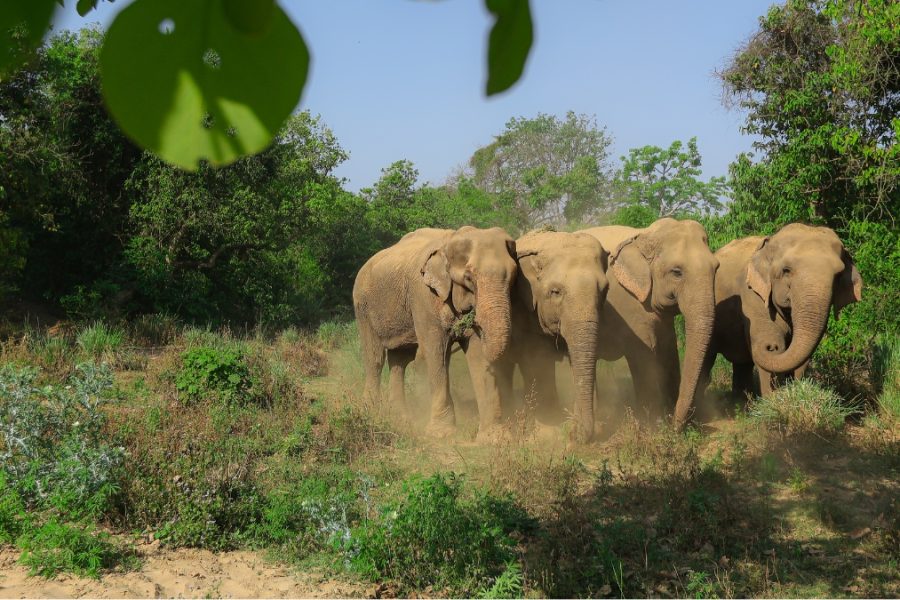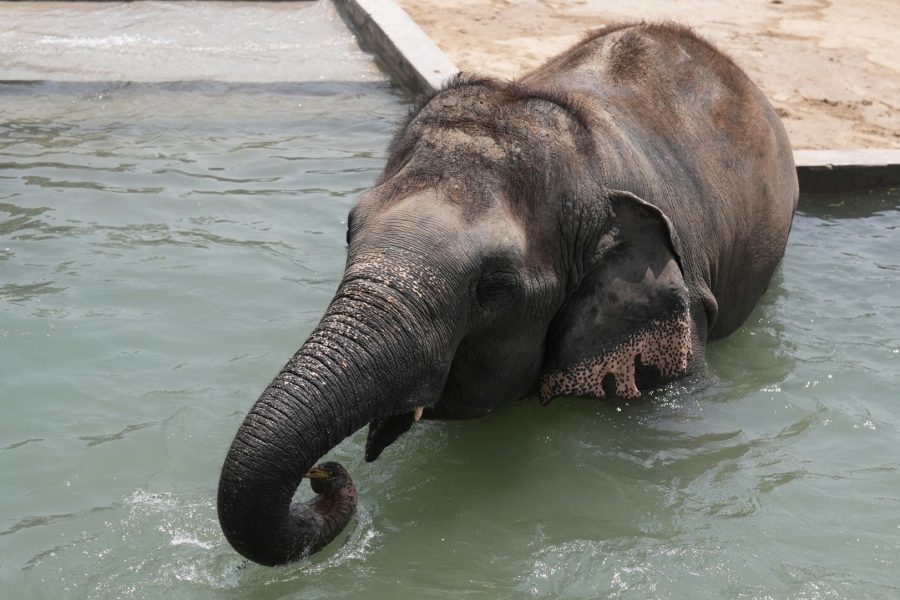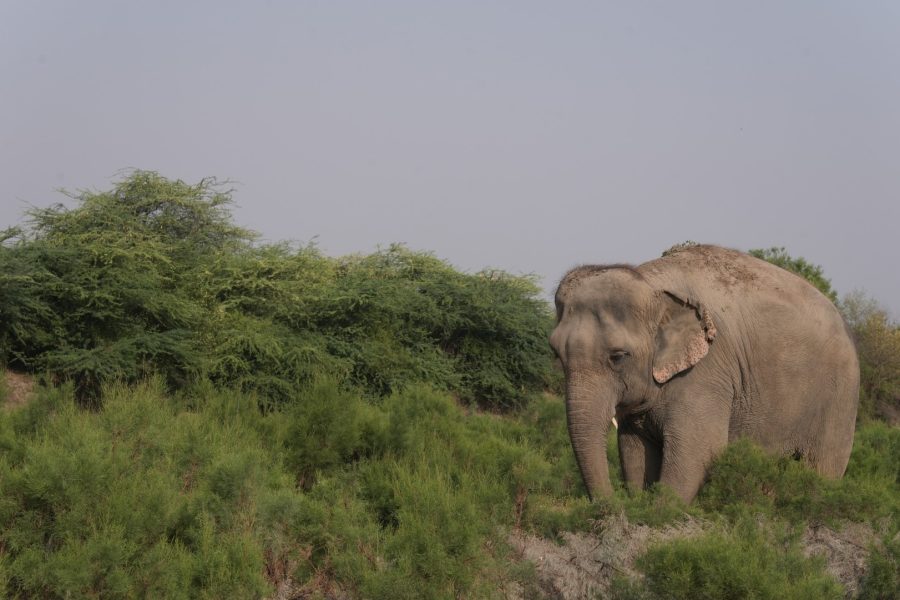For tourists travelling to India, up-close interaction with an elephant tops their bucket-list of must-have experiences. More often than not, to tick off this bucket-list item, tourists are led to captive elephants. The owners of these captive elephants always have a readily available list of “fun” activities that a tourist can engage in with the elephant in exchange for money. As the tourists enjoy their lifetime of experience, the plight of the elephant goes ignored. No one wants to know, why this elephant is here or how it got there?
Riding elephants for joy is one such activity that is commonly offered to tourists in India. The heavy colourful decorations and the intricately painted designs on the elephant cleverly distract tourists from the trauma the elephant is made to suffer to become rideable. Cruelty begins right from the moment the calf is kidnapped from its maternal herd, and then kept in isolation in a squeeze trap. Life constricted inside the squeeze trap, or kraal, is a tragic nightmare: the calf is starved and beaten for days on till the time fear of the keeper instills in the calf’s mind and it becomes completely submissive out of fear. The wild spirit of the elephant is completely subdued and it accepts a lifetime of slavery. The elephant then allows a 200 kg heavy saddle, or howdah, to be strapped onto its back to enable tourists to a joyride on it. The weight easily exceeds over 300 kg putting immense pressure on the elephant’s spine. Despite the constant discomfort that the elephant is in, with the taming blows from the keeper’s bullhook, or ankush, and stick or laathi, the elephant continues to go on.
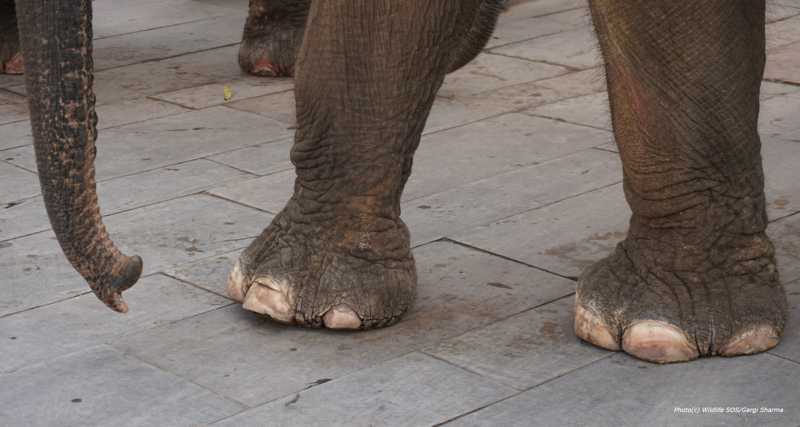
The negative reinforcement is merely a small part of the stressful lives of ride giving elephants. Their commercial exploitation wrecks their body greatly as little attention is paid to their well-being. Walking on unnatural, concrete paths leads to the early onset of arthritis and the wearing off of the delicate footpads of the elephant. The pain is often aggravated by over-growing cuticles and nails, which due to improper care lead to painful cracks and infections. An elephant consumes on a daily basis an average of 120 kg fodder and requires free access to water to remain hydrated. However, when an elephant is only seen as a means of earning money, its basic requirements are secondary. In fact, despite chronic conditions like ankylosis, blindness and painful abscesses, the elephant is made to work continuously, often finding relief only in death.
Famous for its history, architecture and culture, Jaipur attracts a large footfall of tourists flocking to India. Jaipur is also home to one of the most visited-forts, the Amer Fort. Known for its alluring beauty and massive structure, Amer Fort also has a dark side to it. It promotes animal exploitative tourism in the form of elephant riding. Every day elephants from the nearby villages walk to Amer Fort with the howdah strapped onto their backs, to carry tourists from the courtyard of the fort to the steep main entrance. This seemingly innocent activity puts the elephant under immense stress as it carries tourists on its back- its spine is constantly under pressure as its feet bruise and there is no respite from the scorching heat.
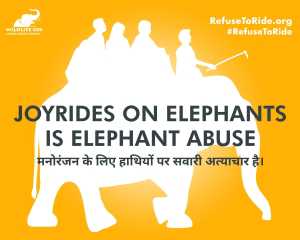
Last year the Animal Welfare Board of India (AWBI) published a shocking report about the dire conditions of the elephants giving rides at Amer Fort. It was no secret that these elephants suffer immensely, however, the statistics painted an even sorrier picture. All of the elephants at Amer Fort were suffering from foot problems such as deformation, cracks, bruised footpads, etc., and nearly 20% of the elephants were blind. One-third of the elephants were over the age of 50 needing retirement. However, the nail in the coffin came when it was found that all the weight limits for elephants giving rides were being flouted every day leading to the over-exertion of the elephant on a daily basis.
In the light of the AWBI Report, Wildlife SOS launched its RefuseToRide campaign aimed at highlighting the dark truth about elephant riding to create awareness amongst tourists and the general public. Through this campaign, we hope to make tourists instrumental in cutting down the demand for joy-rides by making a more informed travel choice.
After creating a one-stop information deck about elephant riding, Wildlife SOS has launched an outdoor campaign as a part of their efforts to spread the message of RefuseToRide and bring it in the public eye. Rolling-out ‘RefuseToRide’ as an outdoor media campaign is an important step towards bringing a positive change in the life of the voiceless elephants who suffer for the entertainment of humans at Amer Fort and elsewhere.
Phase I:
The Golden Triangle comprising of the popular cities of New Delhi, Agra and Jaipur, is a much-travelled route in Northern India. A popular choice of transport from New Delhi to Agra is the fast train- Gatimaan Express that takes tourists easily and quickly to the Taj Mahal.
From 21st of February, for a period of one month, the Gatimaan Express train ride became an educational ride as the headrests on the seats of the train were adorned with the message- “Joyrides on elephants is elephant abuse.” The aim of utilising advertising space in Gatimaan Express was to refrain tourists from riding elephants who continued their journey Golden Triangle journey to Jaipur or elsewhere.
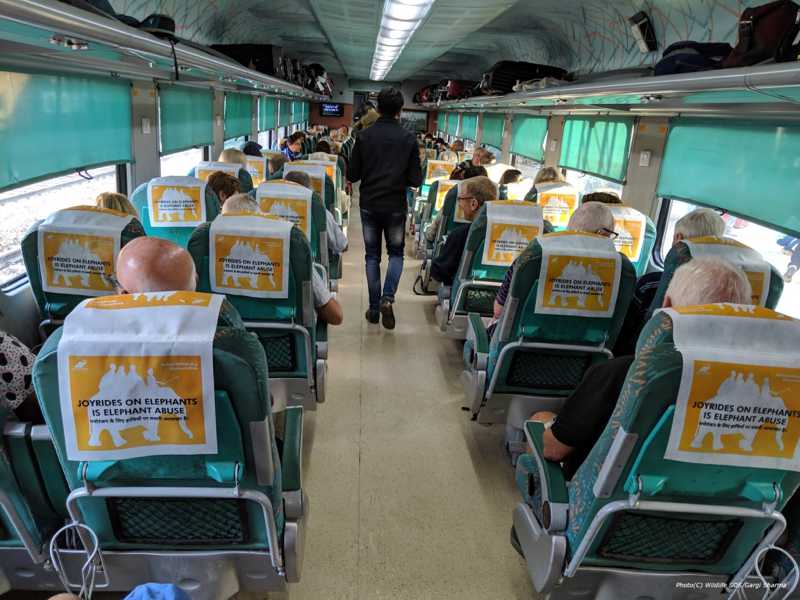
Phase II:
The campaign has reached Jaipur city, home to Amer Fort and the infamous elephant joyrides! The abuse and torture meted to the elephants in Jaipur are well-documented, yet this exploitative business continues to flourish as the demand for elephant-interactive experiences never subsides.
A common means of travel within the city are auto-rickshaws, fondly known as tuk-tuks amongst tourists. Being inexpensive and convenient, the roads of Jaipur are bustling with auto-rickshaws that are hired by all demography of people to navigate the crowded spaces of the city. From 24th of April, a fleet of 200 auto-rickshaws, emblazoned with the message of “Joyrides on elephants is elephant abuse”, will be travelling within the city and bringing the important message of elephant abuse on the streets. With an eye-catching yellow colour, the messaging is hard to ignore. We hope that tourists in the city after noticing this message will make the conscious effort of not indulging in an elephant joyrides at Amer Fort, or elsewhere in the city.
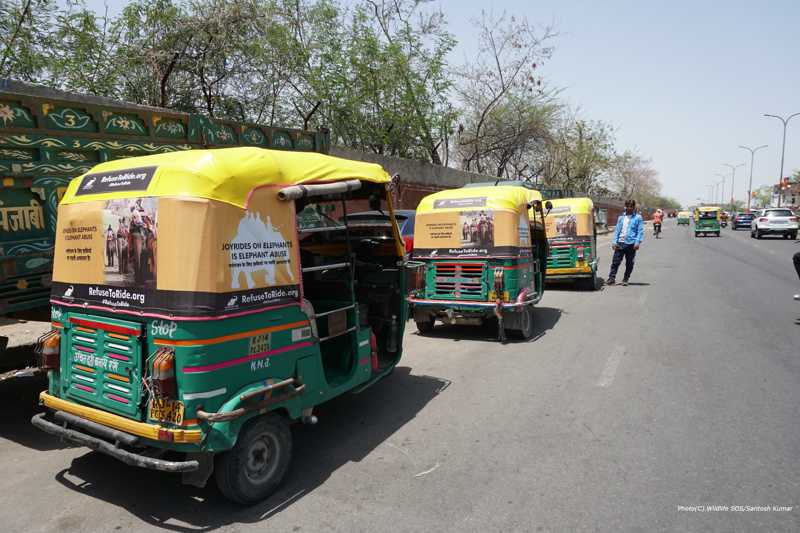
Join the movement and RefuseToRide an elephant. If you are travelling within Jaipur and happen to notice the auto-rickshaws emblazoned with “RefuseToRide” messaging, do take a photo and tag us using #RefuseToRide.

